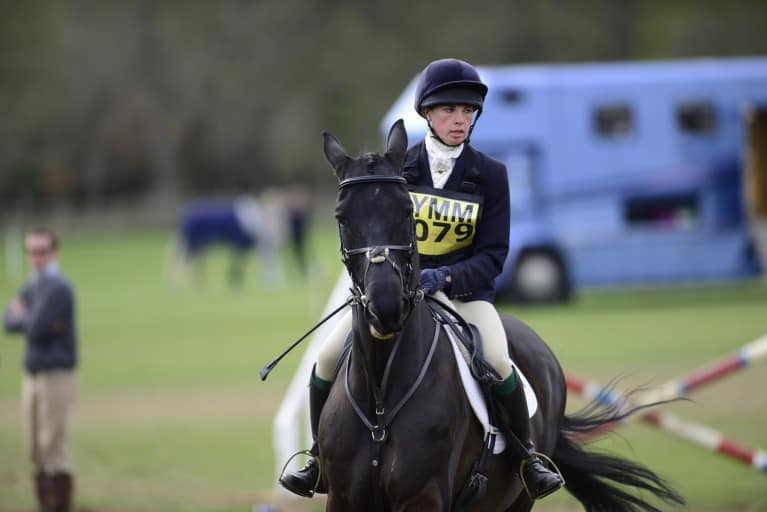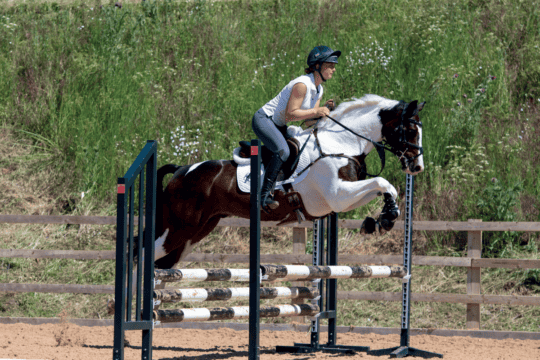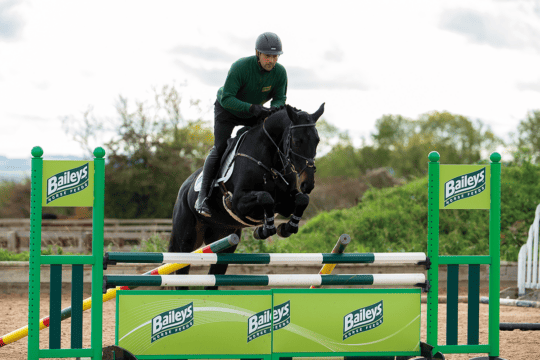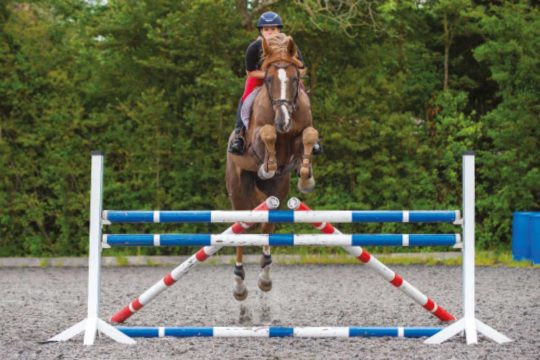-
Riding Schooling and Training
-
Health and Veterinary
-
Management
-
Mind Matters
-
Buying and Selling
-
Insurance Advice
FAQs
Go into the showjumping arena fully prepared this season, and leave all the fences standing. Tina Sederholm explains how

Jumping a good horse around a course of fences, feeling the punch as he takes off and that moment of suspension mid-air, is one of my all-time favourite experiences. Of course, the icing on the cake is when the commentator says, “Clear round!” at the end of it. But jumping a clear round is not a matter of chance; it is the result of good preparation, both at home and at the competition.
 Prepare yourself
Prepare yourself
Before you consider taking your horse to a competition, you need to make sure of three things…
1 That he is confident jumping different fillers and colours.
2 That you have enough control over him to jump several fences one after the other.
3 That he is happy to jump the height you will meet in the ring, if not
a few centimetres higher.
If you do not have many fences at home, it is worth following up some other options. See if you can go to a friend and try out over their fences a couple of times before a show, or attend some pony club or riding club jumping clinics. If you are lucky enough to have your own fences, make sure you move them regularly and set them up in different ways, so that your horse gets used to seeing new obstacles.
It is also helpful to jump your horse a couple of days before a show. There are a few older, experienced horses that jump better if they come to a show fresh, but most horses and all riders are better for having had a practice run in the week leading up to the show, or in the case of a young or spooky horse, a few pops the day before.
Walk the course
As you walk the course, follow the line you intend to take with your horse. Notice how sharp a turn might be, or if the ground slopes up or down, and think about what you might need to do to accommodate these things. For instance, if there is a sharp turn, plan to make extra effort to get the horse back on his hocks beforehand.
Tina says…
“As you walk the course, make a note of any sharp turns or sloping ground, so you can plan how to ride them.”
Check the distances between related distances and combinations. A related distance is where there are two fences with three, four or five strides between them. You need to judge how much pace is required to jump the first one so that your horse can easily make the correct striding for the second. Alternatively, if you are on a short striding horse, you may decide to approach the first fence a bit ‘quieter’, so that your horse can easily accommodate an extra stride in the distance.
It is always worth watching a horse or two jump round the course if you can, before you start getting ready. Knowing how the course is riding will help you confirm or make changes to your game plan.
I also like to take a moment to visualise myself riding through the course. I see myself riding positively yet calmly, and imagine the feel of the horse jumping effortlessly. I also visualise the details of the ride – the quality of the canter before I go through the start flags, the way I will make the turns and so on.
Warm up well
It is often said that a competition is won and lost in the warm up. A good warm-up is exactly what it sounds like; an opportunity to get the horse loose and free in his muscles, and check that he is listening to your aids.
When warming up at a showjumping competition, I usually get on when there are about 15 horses to go before me. I warm the horse up on the flat for about 10-15 minutes, first letting him have a good look around so that he gets familiar with his new surroundings, and then checking that he is paying attention to me. I test that he moves off my leg well, that I can make halts and half-halts, and that I can bend and turn both ways. I do this on both reins in walk, trot and canter.
Then, when there are about eight horses to go, I will give him a jump. The idea here is to do enough, but not too much. I like to start off with a cross pole in trot, which I usually jump once off each rein, before progressing to a small upright in canter. I also pay attention to the work I do after the fence – is he responding sufficiently to my collecting aids, and am I making neat turns?
Finally, I will jump a bigger upright and, if that was satisfactory, let him walk and recover for a couple of minutes, before moving on to a small spread. When I have jumped that a couple of times out of a steady canter, I will add a bit more pace and jump a bigger one, finishing up with a spread and an upright similar in size to the fences in the ring. By then there are hopefully a couple of horses left to go, so I can give my horse a breather, check the course, and take a couple of deep breaths to focus myself.
Tina says try this…
“Take a moment to visualise yourself riding through the course.”
However, sometimes it works out that the timing is off and there are several horses before me. In that case, I still give the horse a breather, and then jump one more fence just before I go in the ring to make sure he is still on the ball.
In the ring
I like to trot confidently in to the ring, letting the horse have a look around. I also try to trot past anything I think he might find spooky, just so he gets a bit of a look at it. I then halt, and possibly rein back, before striking off to canter. I make sure the horse is in a really workmanlike canter, and I will also test that I can collect him up, before returning to the competition canter and going boldly, in a good rhythm, through the start flags.
Tina says try this…
“Try not to think too consciously as you jump, just respond to your horse.”
As I jump round the course, I always look where I am going, so when jumping one fence, I am already eyeing up the line to the next one. I do not think too consciously as I am jumping around, I just let myself respond to what is going on.
 For instance, if the horse is bowling on, I will collect him up; if he struggles a bit over one fence, I will give him a bit more leg into the next.
For instance, if the horse is bowling on, I will collect him up; if he struggles a bit over one fence, I will give him a bit more leg into the next.
These thoughts are not always conscious, however, more a product of training and practice. In other words, because I generally collect the horse up after the fence when I am jumping at home, that happens pretty much automatically in the ring anyway.
When I have completed my round, I pull up on a straight line and leave the arena quietly. I always give the horse a pat – even if it has not been perfect – to leave him with a good memory of the ring.
Post-ring care
When I have dismounted and taken care of my horse, I make a short analysis of the round. What did I do well? What do I need to improve for next time? Even if it has not gone perfectly, I try not to stay irritated for too long, but use the mistakes as information for what I need to work on for next time.















